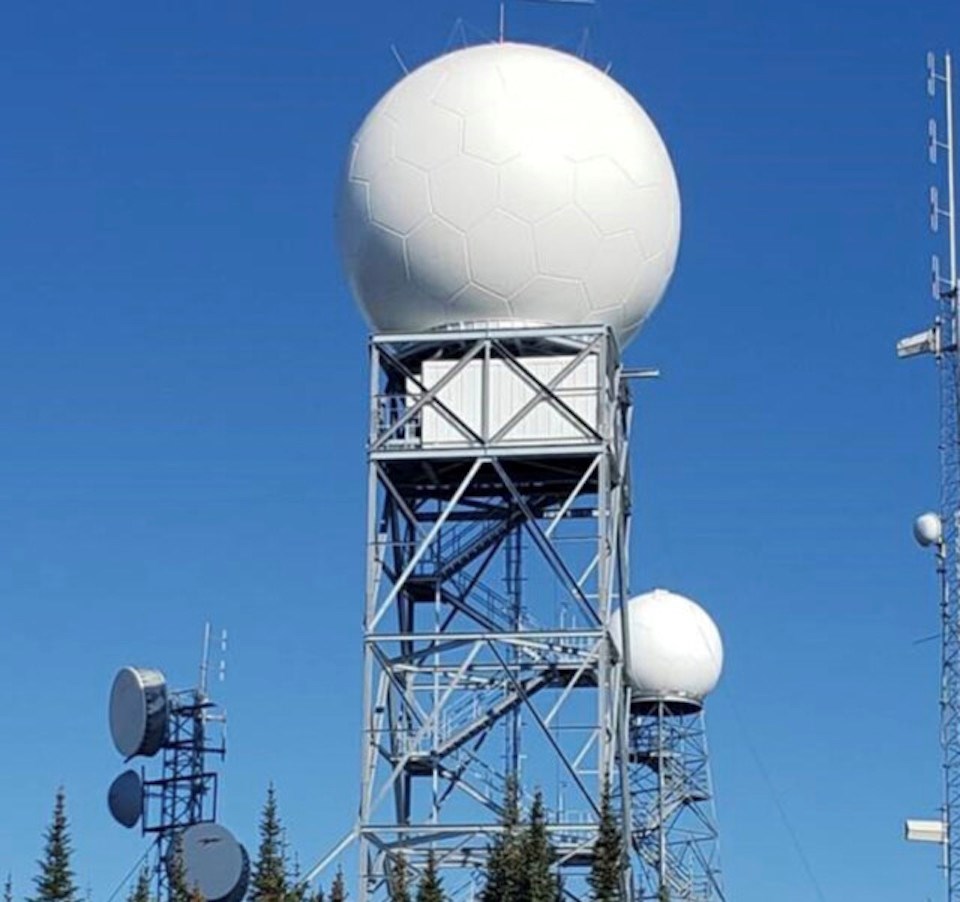The completion of a new Environment Canada radar tower on Vernon's Silver Star mountain can’t come soon enough for B.C Interior residents who rely on the service.
Gale Tremblay of Tremblay Excavating says her company holds contracts for commercial and strata snow clearing for clients throughout the northern half of Kelowna.
Tremblay says they have relied on radar data from Environment Canada since they launched their business in 2003 to dispatch plow staff to certain parts of the city.
“I follow the radar way more than the written reports,” she says.
Environment Canada is in the midst of a seven-year process of upgrading its radar network across the entire country.
As a result, the radar tower at Silver Star mountain — which serves the entire B.C. Southern Interior — was taken offline in July so construction could start on the new tower. The old tower was available when needed until late September.
That means Tremblay’s business was flying blind when the snow hit the Okanagan starting Friday. Monday evening’s forecast, for example, called for snow to taper off at around 7 p.m.
“So we quit plowing, there was nothing in the forecast and nothing showing up on the radar… and then someone wakes up at 4 a.m. this morning and holy crap we got four inches.”
Environment Canada meteorologist Terri Lang tells Castanet the new radar tower started its “burn in” phase last week, meaning they are testing the scans and quality of data.
They are working towards having the radar data available to the public again on Dec. 5.
Lang says the new tower will be able to provide double the range at 240 kilometres and more accurate information. Scans will take place every six minutes instead of the previous 10.
Longer Doppler range will mean meteorologists will be able to see the rotation of clouds further out, which will help with wind warnings.
The new tower also uses dual polarization technology, which means it sends a beam vertically and horizontally.
“That is able to discern what the precipitation type is that it's encountering. So is that a snowflake? Is it a hailstone or raindrop?” Lang said.
While the radar tower is used mostly for short-range forecasting, hours not days, the data does end up getting ingested into weather models that end up producing weather forecasts down the line, Lang said.
“We're as excited as everybody else to get these radars. And we are as impatient as everybody else as well,” Lang said. “It's an exciting change, it's a major upgrade for the system across Canada.”
The federal government announced in 2017 the purchase of 20 new radar stations for the entire country would cost $83 million.
The radar tower in Prince George is also in the process of being replaced and should be up and running by the end of the year.




